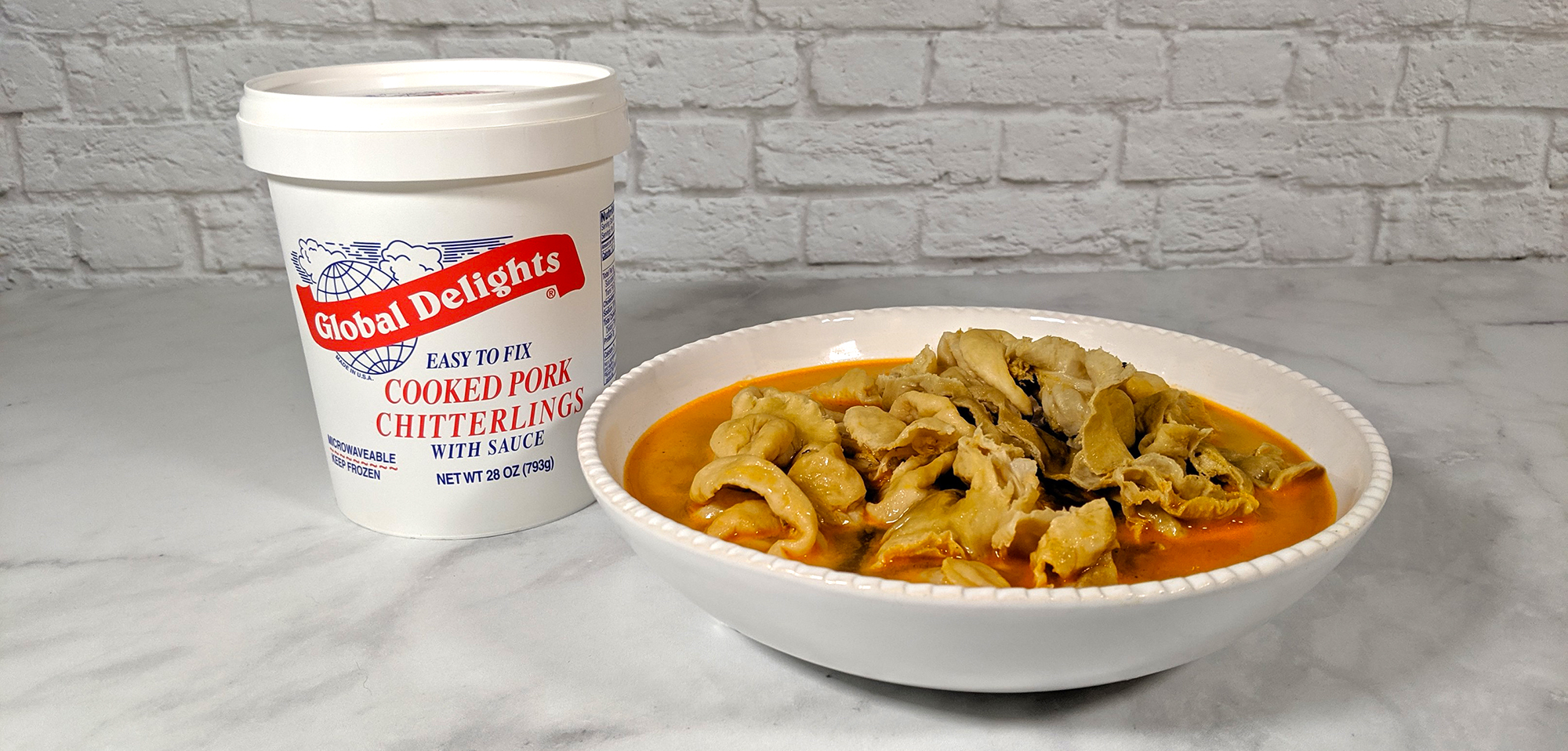Pork chitterlings, also known as chitlins or chitterlings, are a culinary delicacy with a long history in Southern cuisine. However, many people find them unfamiliar or even off-putting. In this article, I aim to shed light on this unique Southern food by explaining exactly what pork chitterlings are, their origins and cultural significance, how to select and prepare them safely, and even recipes to try this delicious dish yourself!
What Are Pork Chitterlings?
Pork chitterlings are the small intestines of pigs that have been thoroughly cleaned and prepared for consumption. Chitterlings can also occasionally refer to the intestines of cows, but pork chitterlings are much more common, especially in the American South.
Fresh chitterlings have a very strong odor and must be meticulously cleaned before cooking. Once prepared, chitterlings have a chewy, gelatinous texture and a mild, savory taste that takes on the flavor of whatever seasonings they are cooked with.
Common preparations include boiling, frying, or stewing Seasonings like onions, garlic, pepper, vinegar, and hot sauce are often used to flavor the chitterlings.
The Origins and Significance of Chitterlings
The practice of consuming animal organs and intestines has existed for centuries across many cultures as a way to reduce waste and make use of the entire animal. However, chitterlings hold a particularly important place in African-American history and Southern food traditions.
During slavery in America, enslaved people were often given the less desirable cuts of meat, like pig intestines, feet, neckbones, and ears. Resourceful cooks transformed these ingredients into savory, nutritious dishes that came to represent ingenuity and perseverance.
Cooking chitterlings was a chance for enslaved cooks to display their skills and creativity. Over time they became a nostalgic delicacy with important cultural meaning for many African-Americans.
Today, chitterlings are still found on some Southern holiday tables, especially for New Year’s Day. They represent a lasting impact of African-American foodways on the broader American cuisine.
How to Select and Clean Chitterlings Safely
If you want to try your hand at this historic Southern specialty, it’s important to know how to properly select and clean chitterlings to avoid illness. Here are some tips:
-
Purchase pre-cleaned chitterlings whenever possible, as these have already been boiled and cleaned. Check that the packaging is vacuum-sealed.
-
If using raw chitterlings, look for plump, shiny intestines with a mild odor. Avoid any with a very strong smell.
-
To clean, boil the chitterlings then rinse thoroughly to remove debris. Repeat this process until water runs clear.
-
Cook chitterlings within 1-2 days or freeze for later use. Thaw frozen chitterlings in the refrigerator.
-
Keep kids and infants away from raw chitterlings, wash hands thoroughly after handling, and disinfect all surfaces the chitterlings touched.
Follow these steps carefully to ensure safe, sanitary preparation of this unique ingredient.
Cooking Up Chitterlings: Recipes to Try
Once you’ve properly cleaned your chitterlings, it’s time for the fun part – cooking! Here are some classic recipes to give this Southern specialty a try:
Simple Boiled Chitterlings
Ingredients: Cleaned chitterlings, onion, garlic, vinegar, salt, pepper, hot sauce
Instructions: Boil chitterlings 2-3 hours until tender. Drain and season to taste with onion, vinegar, salt, pepper and hot sauce.
Crispy Fried Chitterlings
Ingredients: Cleaned chitterlings, buttermilk, flour, Cajun seasoning, vegetable oil
Instructions: Soak chitterlings in buttermilk. Dredge in flour and Cajun seasoning. Deep fry in 350°F oil until golden brown.
Chitterlings and Potatoes
Ingredients: Cleaned chitterlings, potatoes, onion, garlic, bell pepper, tomatoes, vinegar, hot sauce
Instructions: Boil chitterlings 2 hours. Add potatoes, onions, peppers, tomatoes and cook 30 mins more. Season with vinegar and hot sauce.
Spicy Chitterlings Stew
Ingredients: Cleaned chitterlings, sausage, chicken broth, onion, bell pepper, garlic, tomatoes, hot sauce, thyme, cayenne
Instructions: Brown sausage with vegetables. Add chitterlings, broth, tomatoes and seasonings. Simmer 1 hour until thickened.
Get creative and add your own flair to these traditional recipes! Just be sure to cook chitterlings thoroughly before eating.
Give Chitterlings a Chance
While chitterlings may seem intimidating or even unappealing at first glance, they are an important tradition in Southern culinary history. When properly cleaned and cooked, they make for a unique and flavorful meal that provides a direct taste of the past.
Next time you get the chance, I suggest giving chitterlings a try with an open mind. Follow the tips above for safe handling, season them well, and embrace this opportunity to honor the ingenuity of generations past. Just maybe, you’ll discover a new favorite Southern delicacy!

Pork Poop Tubes aka Chitterlings aka Chitlins – Why Would You Eat That?
FAQ
What are pork chitterlings made of?
What do pork chitterlings taste like?
Are pork chitterlings good for you?
Why do people eat chitlins?
What are chitlins & chitterlings?
Chitlins, also known as chitterlings, are a culinary delicacy that has a long and storied history in the Southern United States. Made from cooked pig intestines, chitlins are a staple of soul food cuisine and are often served as part of a larger meal.
What is pork chitterling?
Chitterlings are a type of offal, or organ meat, and are rich in connective tissue, which gives them a soft and gelatinous texture. Pork chitterlings are often served fried or grilled, and can be eaten on their own or used in a variety of dishes.
Is chitterling a pig?
Chitterlings are also eaten as a dish in many East Asian cuisines. Both large and small intestine (typically pig) is eaten throughout China. Large intestine is called feichang, literally ‘fat intestine’ because it is fatty.
How do you eat pork chitterlings?
Pork chitterlings are often served fried or grilled, and can be eaten on their own or used in a variety of dishes. If you want to use them as a side dish, you can simply season them with salt and pepper, and then roast them in the oven until they are cooked through. Are you ready to take your taste buds on a wild ride?
